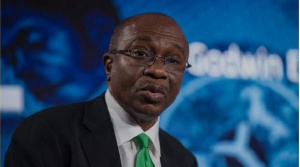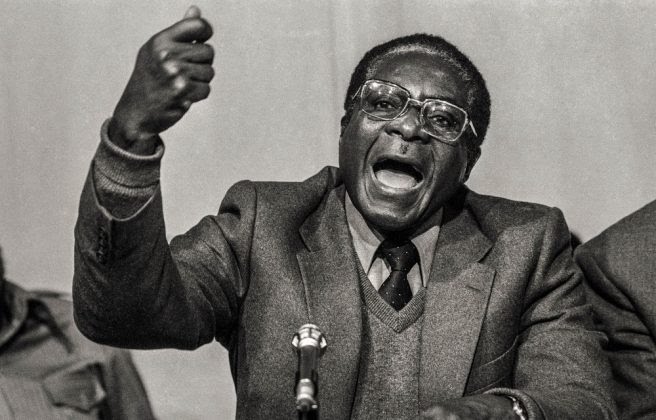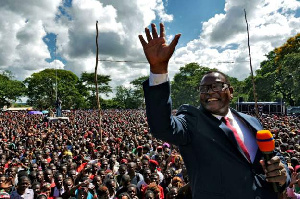Banks borrow N19.6tn from CBN amid rising liquidity problems

Commercial banks borrowed a total of N19.64tn from the Central Bank of Nigeria in 2019, an increase of 73 per cent from the N11.36tn borrowed in 2018.
This has raised concerns among analysts following the rising liquidity problems in the financial services sector.
This happened barely one month after the World Bank warned the CBN against supporting undercapitalised banks indefinitely.
According to the apex bank’s financial data analysed by Sunday PUNCH, commercial banks through the CBN Standing Lending Facility window borrowed N7.43tn between July and December 2019 as against N4.5tn borrowed in 2018, an increase of 65 per cent.
The analysed data revealed that banks borrowed N8.66tn from the regulator in the first quarter of 2019; N3.55tn in the second quarter; N6.11tn in third quarter; and N1.3tn in the fourth quarter.
Top bank executives told one of our correspondents that commercial banks and merchant banks continued to access the CBN SLF window to square-up their financial position in 2019.
The trend at the CBN’s SLF window showed more patronage while the Standing Deposit Facility declined as commercial banks strive to meet the regulator’s 65 per cent Loan to Deposit Ratio policy.
The SLF is the regulator window through which commercial banks access funds from the CBN to carry out their business activities and meet obligations that are falling due while the SDF means commercial banks deposit with the apex bank.
According to financial services executives, banks with more liquidity problems appear to frequent the CBN SLF window than those with less challenges.
Meanwhile, the Monetary Policy Committee on March 26, 2019, voted to reduce Monetary Policy Rate to 13.5 per cent from 14.00 per cent, applicable to the SLF interest rate of 15.50 per cent as against 16 per cent in 2018.
The report further showed that during the fourth quarter of last year, the commercial banks borrowed N2.8tn from the CBN, representing a 29 per cent decline from N3.96tn borrowed in the fourth quarter of 2018.
Sunday PUNCH’s findings showed that the commercial banks during the fourth quarter of 2019 reduced borrowing from the apex bank and focused more on the LDR deadline which mandates them to give soft credit to key sectors in the economy.
According to financial experts, although the data revealed that banks borrowed more funds from the regulator in 2019, compared to 2018, most of those borrowings appear to have come from small and mid-size banks experiencing liquidity problems
More borrowing, a sign of liquidity problems in smaller banks – Experts
The Chief Economist/Head, Investment Research of PanAfrican Capital Holdings, Mr Moses Ojo, attributed the increase in the SLF to the low liquidity of some of the commercial banks.
He noted that most tier-three commercial banks had borrowed heavily from the apex bank to square up their daily business activities.
He said, “The factors that accounted for this is mainly the low level of liquidity of some of the commercial banks in the country.
“While some of the operators have a strong liquidity base, while others are struggling. “The operators in this category are mostly in the third-tier class in the banking sector.”
He explained further that, “The weaknesses in the liquidity base of these operators led to them to be seeking cover from the regulator during the period.”
The Managing Director, Highcap Securities Limited, Mr David Adnori, attributed the development to the banks lending to the real sector and customers, which eventually impacted on credit to the private sector that closed November at N26.41tn from N25.8tn reported in October.
According to him, since the rate of borrowing from the CBN around 15.50 per cent and lending to customers at 30 per cent, the margin to commercial bank seems lucrative and profitable.
He said, “Commercial banks are the major ones accessing the SLF window. They borrow from the CBN and on-lend it to their customers and the real sector.
“Take for instance, the commercial banks borrow funds through the SLF window at 15.50 per cent and lend it to their customers at the range of 25-30 per cent. These commercial banks have made a profit margin of eight per cent which is a profitable business.”
Also commenting, a research analyst at Investment One Financial Services Limited, Mr Abayomi Ajayi, said the 73 per cent increase in the SLF last year was due to the liquidity challenges in the sector.
He said, “The increase may have been the impact of the prevailing liquidity conditions in the banking system witnessed in 2019.”
Ajayi added, “As we know, the CBN retained its tight stance on monetary policy in its bid to maintain price stability and check inflation.
“Most of the lending from the CBN would have gone to tier II banks as they felt the brunt more during the period.”
CBN may continue to support undercapitalised banks
Meanwhile, there are strong indications that despite the World Bank’s warning, the CBN may continue to support undercapitalised banks.
The World Bank had warned that the assets of the commercial banks might deteriorate if the apex bank continued to support undercapitalised banks.
The World Bank gave the warning in its latest Nigeria Economic Update.
In the report, the World Bank advised the CBN to monitor the quality of the assets of Nigerian banks ‘closely’.
The World Bank specifically expressed reservations about the manner in which the CBN extended liquidity support to four undercapitalised banks.
The World Bank had said, “The CBN gave liquidity support to four medium-sized banks that were severely undercapitalised, without requiring hard time-bound recapitalisation plans.
“Going forward, asset quality needs to be closely monitored because it may deteriorate if the CBN continues to exercise regulatory forbearance for undercapitalised banks.
“Banks are performing better, but asset quality needs to be monitored closely.”
Top officials of the CBN confided in our correspondent on Friday that the apex bank needed to support the small-sized banks to ensure the safety of the banking sector.
One of the directors of the bank, who spoke on condition of anonymity, said the issue of under capitalisation raised by the World Bank was already being addressed by the apex bank.
The official said, “The World Bank raised the issue of undercapitalised banks but what you should know is that the CBN is currently addressing that.
“Recall the CBN Governor on assumption of office for his second term put the issue of recapitalisation as one of his five-year agenda.
“So, when that agenda is fully implemented, it will make our banks to be very well capitalised and stronger.
On the issue of assistance for banks, the official said the apex bank could watch and allow the banks to go under while depositors lose their money.
The source said, “They spoke about the CBN’s assistance for banks, what do you expect the CBN to do? Fold its hands and allow our banks to fail and be taken over by foreign interests for peanuts?
“Of course we cannot allow that to happen. We are pursuing a nationalistic agenda and we must remain committed to that objective.
“When some banks had issues recently, the CBN did not just fold its hands and allow them to just go like that, we intervened and that intervention helped to save depositors’ fund.
“We are doing everything to ensure that the safety and soundness of the banking sector is maintained. The banking sector is showing a lot of resilience now.”
Banking industry stable, safe, says CBN
However, the CBN said the banking sector remained strong despite the reported weaknesses in some banks.
The Director, Corporate Communications Department, CBN, Mr Isaac Okorafor, told one of our correspondents that despite the reported weaknesses in some small-sized banks, the Nigerian banking sector remains stable, safe and sound.
According to him, the weak banks’ assets collectively represent less than five per cent each of the assets, deposits and credit of the banking industry.
He said the average industry Capital Adequacy Ratio of the banking sector was above 15 per cent.
The CAR, he explained, was well above the international benchmark of 10 per cent.
In addition, he said the liquidity in the banking industry was far in excess of the 30 per cent.
He said, “Despite the reported weaknesses in some small-sized banks, the Nigerian banking sector remains stable, safe and sound. The weak banks’ assets collectively represent less than five per cent each of industry assets, deposit and credit.
“The average industry CAR at above 15 per cent is well above the international benchmark of 10 per cent while liquidity is far in excess of the 30 per cent.”
How oil & gas, power sector loans, recession deepened financial sector’s woes – Bank executives
Top bank executives told Sunday PUNCH on Saturday that liquidity problems with some commercial banks, especially a few of the small and mid-size banks could be traced loans advanced to some oil and gas as well as power companies which became bad.
They also said the recession that hit the country about two years ago impacted heavily on the banking sector.
The chief executive officer of one of the banks, who spoke to one of our correspondents, said, “The liquidity problems with the banks can be party traced to legacy loans that came as a result of the bank lending to the power sector and the oil and gas sector. Up till the balance sheets of some of the banks still have these loans.
The CBN has given them some kind of forbearance but the challenge is that the loans impacted the banks badly. Banks gave loans to power firms during the privatisation of the power sector. Government encouraged banks to give the loans but those loans later had problems. Then you had the recession that hit the country, the first in 25 years. That affected the banking sector. The big banks are surviving because of their size. However, we have some small banks that are having very serious issues. I think these are the ones the World Bank is talking about.”
A director in another commercial bank noted that the fact that the CBN had been supporting some banks without a definite timeline meant those banks had some peculiar problems.
According to him, some of those banks may find it difficult to raise funds in the market because investors know their state.
He, however, said they might be able to get strategic investors or get acquired by bigger banks at a lower price.
He said, “There is a need for the CBN to take action on those weak banks but I am not sure the regulator is ready for that. There are credit risks and governance issues that have to be addressed. However, for the weak banks, the CBN has to put its feet on the ground without minding the implication. It is only a source of worry to me that this is happening barely 10 years when the government use public funds worth N5tn to bail out banks through AMCON.
It means we have not learnt our lessons as a nation. It means there are still credit and governance issues. The bond that was issued to bail out banks in 2009 is still on CBN balance sheet. Banks are paying a levy to a sinking fund but even that one to is not fair. Both banks that carry heavy bad loans to the CBN and those that didn’t carry anything are paying the same thing.”
Source: punchng.com





